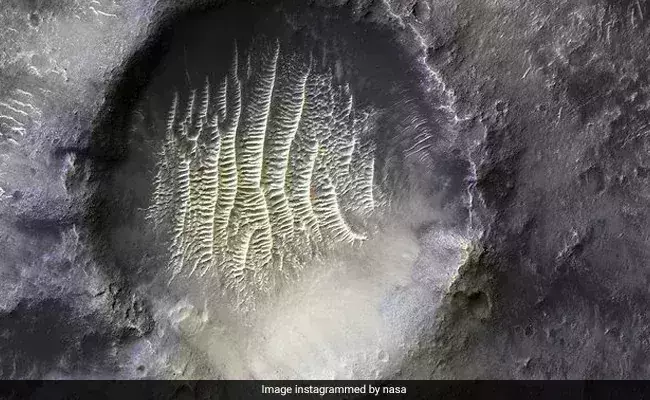
NASA's stunning image of Mars crater looks like an "alien footprint"
text_fieldsNetizens are in complete awe after the US National Aeronautics and Space Administration (NASA) on Monday released a stunning image of a Mars crater.
In the post, NASA wrote: "The Martian crater marks the spot. You're looking at 0° longitude on Mars—the Greenwich Observatory equivalent on the Red Planet."
The post added that the Greenwich Observatory marks Earth's Prime Meridian, which is a north-south line that defines where east meets west and is used as the zero reference line for astronomical observations.
The space agency noted that the image was captured by the High-Resolution Imaging Science Experiment (HiRISE), on the Mars Reconnaissance Orbiter. The map is projected here at a scale of 50 centimetres (19.7 inches) per pixel.
"The map is projected here at a scale of 50 centimetres (19.7 inches) per pixel," NASA wrote in the caption.
Since shared, the post has garnered more than 449,000 likes. Several Instagram users expressed their awe in the comment section. "Looks like an alien footprint on Mars," wrote one user. "All of God's creation encompasses beauty and the universe is not an exemption," said another. "Something spectacular that leaves you speechless!!!" added third.
It is to mention that Greenwich Observatory on Earth sits atop a steep hill in London, UK. It marks Earth's Prime Meridian, which is a north-south line that defines where east meets west and is used as the zero reference line for astronomical observations.
Coming back to the mesmerising image of Mars, in the caption, NASA revealed that a larger crater sits within a second rocky basin, designated the "Airy Crater". It explained that the Airy Crater originally defined zero-longitude for the Red Planet, however, as scientists started capturing more detailed images of the planet's surface, they needed a more precise marker. Therefore, the space agency designated the smaller crater - dubbed Airy-0 (zero) - as it's Prime Meridian in order to not alter existing maps.
























